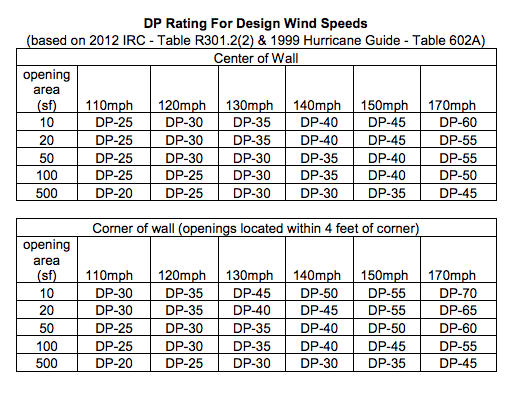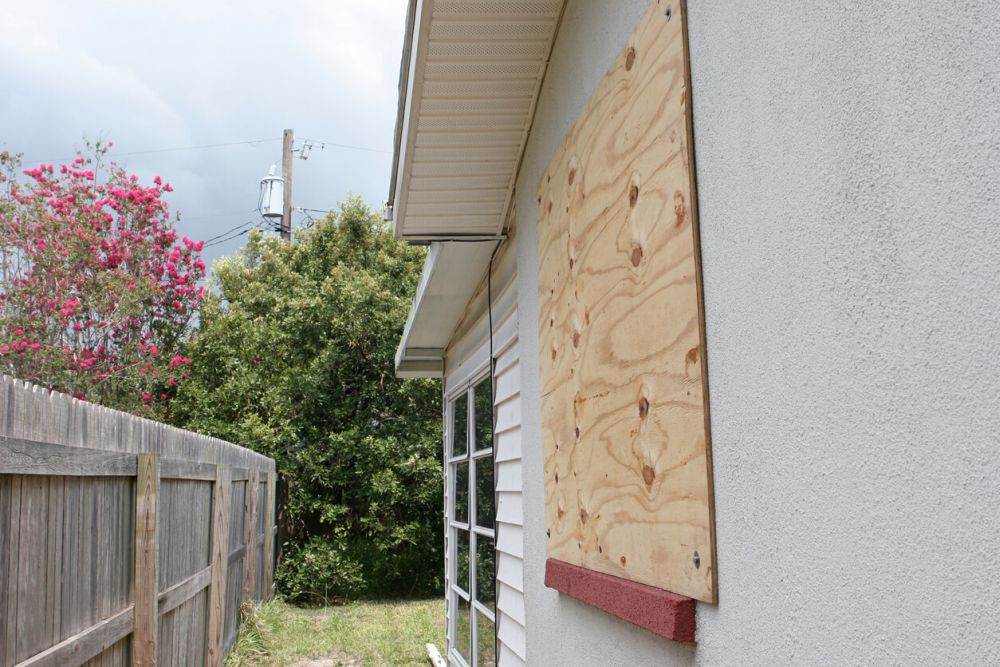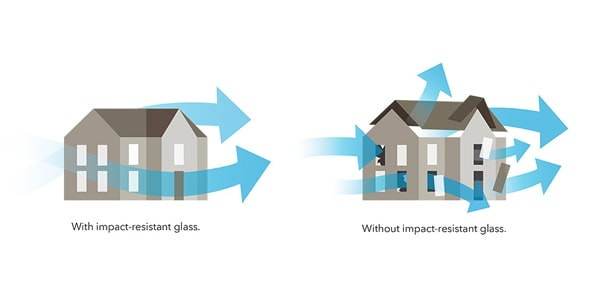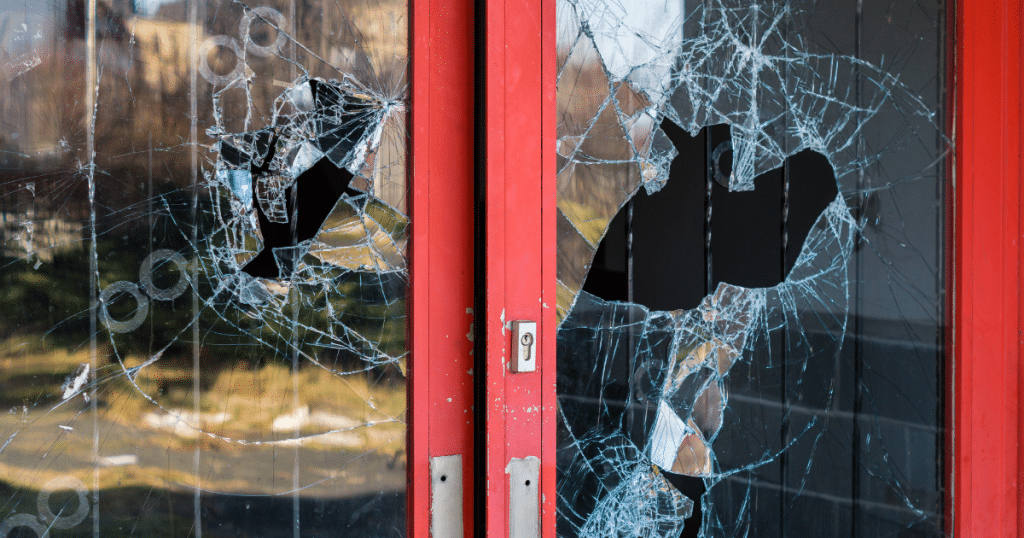In this article, we will discuss the impact of wind on windows and how much they can actually withstand. You will learn about the different factors that can affect the structural integrity of windows during high winds, such as the design, materials used, and installation quality. Understanding these factors will help you make informed decisions when it comes to choosing windows that can withstand strong winds and protect your home.
Strong winds can have a significant impact on windows, especially during severe weather conditions like hurricanes or tornadoes. The amount of wind that windows can withstand depends on various factors. The design of the windows plays a crucial role in their ability to withstand wind pressure. Windows with thicker frames and reinforced glass are generally more resistant to wind forces. Additionally, the materials used in the construction of windows, such as impact-resistant glass or laminated glass, can also enhance their ability to withstand high winds. Proper installation is equally important, as windows that are not installed correctly may be more susceptible to wind damage. By considering these factors, you can choose windows that are better equipped to handle strong winds and protect your home.
Factors affecting wind impact on windows
When it comes to the resilience of windows in the face of strong winds, there are several factors that can significantly impact their ability to withstand the forces exerted upon them. In this article, we will explore the different factors that contribute to the wind impact on windows, and how they can affect their performance.
Window design and construction
The design and construction of windows play a crucial role in their ability to withstand wind impact. Windows that are specifically designed to resist high wind pressures are likely to fare better during extreme weather conditions. Factors such as the shape, size, and thickness of the window frames, as well as the number and type of panes, impact the overall strength of the windows.
For example, windows with reinforced frames, multiple panes, and laminated glass are often more resistant to wind impact compared to single-pane windows with weaker frames. Additionally, windows that have been designed to distribute and transfer wind loads efficiently across the entire structure can endure higher wind pressures without sustaining damage.
Quality of materials used in windows
The quality of materials used in the construction of windows is another important factor in determining their ability to withstand wind impact. High-quality materials, especially those that are resistant to corrosion and degradation, are crucial for ensuring the long-term durability and strength of windows.
For instance, windows made from materials such as aluminum, vinyl, or fiberglass are known to be more resistant to wind damage compared to windows made from wood. The use of impact-resistant or tempered glass can also significantly enhance the ability of windows to resist the forces exerted by high winds.
Window installation process
The installation process of windows can greatly influence their resistance to wind impact. It is important to ensure that windows are installed correctly and securely, following industry best practices and manufacturer recommendations. Improperly installed windows may be more susceptible to wind damage, as they can be more prone to leaks, gaps, or structural weaknesses.
Professional installation is key to ensuring that windows are properly sealed, anchored, and aligned. This helps to minimize any potential weak points and ensures that the windows are able to withstand wind pressures without compromising their structural integrity.
Wind speed and its effect on windows
Understanding wind speed and its classifications is essential in assessing the potential impact on windows. The strength of wind is typically measured using the Beaufort scale or the Saffir-Simpson Hurricane Wind Scale, which categorize wind speeds based on their intensity.
Understanding wind speed and its classifications
The Beaufort scale categorizes wind speeds into 12 different levels, ranging from calm (0) to hurricane-force (12). Each level corresponds to a range of wind speeds and provides a general description of how the wind affects the environment.
On the other hand, the Saffir-Simpson Hurricane Wind Scale classifies hurricanes into five categories (1 to 5) based on their sustained wind speeds. This scale helps to assess the potential damage that can be caused by hurricanes based on their wind strength.
The impact of different wind speeds on windows
Different wind speeds can have varying effects on windows. As wind speeds increase, the forces exerted on windows also increase, making them more susceptible to damage. Windows can experience several types of wind-related damage, including cracks in glass, frame distortion, leaks, or even complete failure.
Lower wind speeds, such as those experienced during a gentle breeze, may have minimal impact on well-designed and adequately installed windows. However, as wind speeds escalate, the forces can become more significant, potentially leading to window failure if windows are not properly designed or maintained.
Effects of extreme wind speeds on windows
Extreme wind speeds, such as those encountered during severe storms or hurricanes, can pose the greatest risk to windows. The powerful and sustained winds can exert immense pressure on windows, causing them to bow, break, or be ripped from their frames. The impact of flying debris, such as trees, branches, or other objects, can further intensify the forces exerted on windows, increasing the likelihood of damage.
Windows facing the windward side of a building are typically more vulnerable to wind damage, as they are directly exposed to the full force of the wind. Additionally, windows in buildings located in open areas or near large bodies of water may experience higher wind speeds, increasing their susceptibility to wind-related damage.

This image is property of brennancorp.com.
Wind direction and its influence on windows
In addition to wind speed, wind direction can also significantly influence the impact on windows. The direction from which the wind is blowing can determine the way in which windows are exposed to wind pressures, leading to different types of damage.
How wind direction affects windows
The direction of the wind can affect windows differently depending on their orientation in relation to the wind source. Windows facing directly into the wind (windward side) are subject to the highest wind pressures, as the full force of the wind hits them head-on. These windows are most prone to cracks, breaks, or even complete failure, particularly if they are not designed or installed to withstand high wind loads.
Conversely, windows on the leeward side, which face away from the wind, generally experience lower wind pressures. However, they may still be subject to negative pressures or suction forces, which can induce flexing or bowing in the windows. These forces, known as wind uplift, can result in leaks, gaps, or even structural damage if the windows are not properly sealed or anchored.
Susceptibility of windows to different wind directions
The susceptibility of windows to wind damage can vary depending on their design, construction, and orientation relative to the wind direction. Windows that have been specifically designed and reinforced to withstand high wind pressures are usually more resistant to wind damage, regardless of the wind direction.
However, windows that are not adequately designed or installed may be more vulnerable to wind damage, particularly if they face directly into the wind. The angle at which the wind strikes the windows can also impact their performance, as windows at oblique angles to the wind may experience increased stress and distortion.
Damage patterns based on wind direction
Wind direction can also influence the patterns of damage observed in windows. For example, windows facing directly into the wind may exhibit cracks or breaks originating from the corners or edges of the glass, indicating the areas of highest stress. On the other hand, windows on the leeward side may show signs of bowing or flexing, with gaps or leaks developing along the edges or seals.
By understanding the potential damage patterns associated with different wind directions, homeowners and building managers can better assess the condition of windows and identify any weaknesses that may need attention.
Window resistance to wind load
One crucial aspect in assessing the ability of windows to resist wind impact is understanding the concept of wind load. Wind load refers to the force exerted by the wind on a structure, which includes both the pressure and suction forces acting on the windows and their frames.
Defining wind load and its significance
Wind load is a dynamic force that acts horizontally and vertically on structures, including windows. The pressure forces exerted by wind on the windward side of windows can cause them to bow inward, while the suction forces on the leeward side can cause them to flex or bow outward. These forces can compromise the structural integrity of windows over time, leading to cracks, leaks, or even complete failure.
Understanding wind load is crucial in window design and construction, as it helps to determine the strength and durability requirements for windows in different wind zones or areas prone to severe weather conditions.
Window design features for increased wind resistance
To enhance the wind resistance of windows, several design features can be incorporated. For example, windows with sturdy frames and multiple panes can help distribute wind loads more effectively, reducing the likelihood of damage. Reinforcing window frames with materials such as steel or composite materials can also enhance their ability to withstand wind pressures.
The use of laminated or impact-resistant glass is another effective measure to increase wind resistance. These types of glass are designed to absorb and disperse impact energy, making them less prone to breakage or shattering when subjected to high winds or flying debris.
Impact of wind load on structural integrity of windows
The wind load exerted on windows can have a significant impact on their long-term structural integrity. Over time, windows that are continuously exposed to high wind forces may develop cracks, leaks, or warping, compromising their ability to provide a weather-tight seal and maintain their functionality.
The structural integrity of windows is crucial not only for their ability to resist wind impact but also for their energy efficiency and insulation properties. Damaged or improperly sealed windows can result in air leaks, reducing the insulation value of the windows and increasing heating and cooling costs.

This image is property of oceanimpactwindows.com.
Testing methods and certifications for wind impact
In order to ensure the reliability and performance of windows in wind events, testing methods and certifications have been established to assess their resistance to wind impact.
Industry standards for wind impact testing
Various industry standards, such as those set by the American Society for Testing and Materials (ASTM) or the National Fenestration Rating Council (NFRC), outline the testing procedures for assessing the wind resistance of windows. These tests involve subjecting windows to simulated wind forces and measuring their ability to withstand and resist the applied loads.
Testing methods typically involve subjecting windows to a combination of static and dynamic pressure and suction forces, which simulate different wind speeds and pressures. The windows are evaluated based on their ability to maintain their structural integrity and resist any permanent deformation, such as cracking, bowing, or breaking.
Certifications for windows with high wind resistance
Windows that have undergone rigorous testing and meet specific performance criteria may receive certifications to indicate their wind resistance capabilities. For example, the Miami-Dade County Product Approval or the Florida Product Approval are certifications specifically designed to signify that windows meet the stringent wind resistance requirements of these coastal regions known for high wind speeds.
These certifications provide assurance to homeowners and building professionals that the windows they choose have undergone comprehensive testing and have proven their ability to withstand wind impact.
Understanding test procedures for wind impact
In wind impact tests, windows are typically subjected to a range of pressure and suction forces, based on different wind speed classifications. The tests measure factors such as deflection, movement, and deformation of the windows, as well as any evidence of permanent damage.
These test procedures help assess the wind load capacity, structural integrity, and overall performance of windows under various wind conditions, providing valuable information for homeowners, builders, and architects when selecting windows for wind-prone areas.
Protective measures for windows during wind events
In addition to the design and construction of windows, there are several protective measures that can be implemented to enhance their resistance to wind impact.
Use of impact-resistant glass in windows
One effective measure to improve the wind resistance of windows is the use of impact-resistant glass. This type of glass is specifically designed to withstand high wind pressures and resist shattering or breaking when subjected to impact forces.
Impact-resistant glass is typically composed of two or more layers of glass bonded together with an interlayer of polyvinyl butyral (PVB) or ethylene-vinyl acetate (EVA). This construction absorbs the energy of impact, preventing the glass from shattering and reducing the risk of breakage during wind events or in the event of flying debris.
Installation of hurricane shutters or other protective systems
Another widely used protective measure for windows during wind events is the installation of hurricane shutters or other protective systems. Hurricane shutters are designed to cover and protect windows from the impact of windborne debris and high wind pressures.
There are several types of hurricane shutters available, ranging from permanent metal shutters to removable panels or fabric-based systems. By installing hurricane shutters, homeowners can add an additional layer of protection to their windows, reducing the risk of damage from wind impact.
Importance of regular maintenance and inspections
Regular maintenance and inspections are crucial to ensure that windows remain in good condition and maintain their wind resistance capabilities. Inspections should include checking for any signs of damage, such as cracks, leaks, or warping, as well as assessing the integrity of the window frames, seals, and hardware.
Routine maintenance tasks, such as cleaning and lubricating window mechanisms, can help keep windows in proper working order and ensure that they provide a secure and weather-tight seal. Addressing any issues promptly can prevent further damage and improve the overall performance and lifespan of the windows.

This image is property of images.contentstack.io.
Local building codes and regulations
Building codes and regulations play a vital role in ensuring the wind resilience of windows. These codes specify the wind resistance requirements for windows in different regions or wind zones, helping to ensure that buildings are constructed to withstand wind impact.
Building code requirements for wind impact resistance
Local building codes typically incorporate specific requirements for window wind resistance based on the wind speed classifications of the area. These requirements may include factors such as minimum design pressures, impact performance criteria, and testing standards.
By adhering to building code requirements, builders and architects are able to ensure the use of windows that are specifically designed and constructed to withstand the wind forces prevalent in their location.
Considerations for coastal areas and high wind zones
Coastal areas and regions prone to high wind speeds often have more stringent building code requirements for wind impact resistance. This is due to the increased risk of wind-related damage in these areas, particularly during hurricane or severe storm events.
For example, in hurricane-prone regions such as Florida, windows must meet stringent wind resistance standards to be certified for use in high wind zones. These requirements provide an extra layer of protection against wind damage and ensure the safety and resilience of buildings in these areas.
The role of window permits and inspections in ensuring wind resilience
Obtaining window permits and undergoing inspections are important steps in ensuring the wind resilience of buildings. These processes help to verify that windows have been installed correctly, meeting the necessary code requirements and industry standards for wind impact resistance.
Permits and inspections provide an opportunity for building officials to assess the quality of window installations and ensure that they comply with the specified wind resistance requirements. By adhering to these regulatory processes, homeowners and builders can have the confidence that their windows are properly prepared to withstand wind impact.
Window replacements and retrofitting for wind resistance
For existing buildings or homeowners looking to enhance the wind resistance of their windows, there are several options for window replacements or retrofitting.
Choosing the right windows for wind-prone areas
When selecting windows for wind-prone areas, it is important to choose those that are specifically designed and constructed to withstand high wind pressures. Impact-resistant windows or those that have been tested and certified for wind resistance provide the greatest assurance in terms of their ability to withstand wind impact.
Additional design features, such as reinforced frames, multiple panes, or laminated glass, can also enhance the wind resistance of windows. Consulting with window professionals or manufacturers can provide further guidance in selecting the most suitable windows for specific wind conditions.
Benefits of retrofitting windows for enhanced wind resistance
Retrofitting existing windows can be an effective means of enhancing their wind resistance without the need for full window replacements. Retrofit options include the installation of storm windows or the addition of laminated glass films to existing windows.
Storm windows are designed to be installed over existing windows and provide an additional layer of protection against wind impact. They are typically made from impact-resistant materials and can be installed temporarily or permanently, depending on the specific needs.
Laminated glass films, also known as window films, are transparent sheets that adhere to existing windows to provide increased wind resistance. These films are typically made from layers of polyester or polycarbonate and are designed to hold shattered glass together in the event of breakage, reducing the risk of injury or damage from windborne debris.
Finding reliable professionals for window replacements
Whether replacing windows or retrofitting existing ones, it is crucial to find reliable and reputable professionals for the job. Window replacements and retrofits require specialized knowledge and expertise to ensure that the windows are properly installed, sealed, and anchored for optimal wind resistance.
Researching and selecting experienced professionals, such as window contractors or installers, can help ensure that the work is carried out to the highest standards. It is recommended to seek recommendations, review past projects, and request proof of certifications or qualifications before hiring any professionals for window replacements or retrofits.

This image is property of www.aspwindows.com.
Case studies and real-life examples
Examining case studies and real-life examples can provide valuable insights into the performance of windows during wind events.
Examples of windows withstanding severe wind storms
There have been numerous instances where windows have withstood severe wind storms, demonstrating their ability to resist wind impact. For example, buildings located in hurricane-prone areas, such as coastal regions in the United States, are often subjected to strong hurricanes. Several reports have highlighted cases where impact-resistant windows have withstood the forces of hurricanes, effectively protecting the interior of buildings from wind and water damage.
By utilizing impact-resistant windows and following proper installation and maintenance practices, homeowners and building owners can significantly increase the chance of their windows surviving severe wind events.
Damage caused by inadequate wind resistance
Instances of inadequate wind resistance in windows underscore the importance of ensuring that windows are properly designed and installed to withstand wind impact. In areas where wind conditions are not extreme, the effects of wind impact on windows may be less severe. However, during high wind events, windows that are not adequately designed or installed may experience significant damage, compromising the safety, security, and comfort of the building.
Inadequate wind resistance in windows can lead to leaks, drafts, and structural damage, resulting in increased energy costs, reduced comfort levels, and potential hazards for occupants.
Success stories of wind-resistant windows
On the other hand, there are also success stories of wind-resistant windows that have withstood severe storms or hurricanes. These cases demonstrate the importance of investing in high-quality windows that have been specifically designed and tested for their wind resistance capabilities.
By choosing wind-resistant windows and ensuring proper installation and maintenance, homeowners and building owners can have confidence in the ability of their windows to withstand strong winds and protect their properties.
Conclusion
In conclusion, the wind impact on windows is influenced by several factors, including window design and construction, the quality of materials used, the window installation process, wind speed, wind direction, window resistance to wind load, testing methods and certifications, protective measures, local building codes, and window replacements or retrofits.
By understanding these factors and their influence on window performance, homeowners and building professionals can make informed decisions to enhance the wind resilience of windows. Investing in wind-resistant windows, utilizing protective measures, adhering to building codes, and seeking professional expertise can significantly improve the ability of windows to withstand wind impact.
Protecting windows against wind damage ensures not only the durability and longevity of the windows but also the safety, comfort, and energy efficiency of the building as a whole. With proper attention to these factors and proactive measures, windows can withstand severe wind events and provide reliable protection for occupants and properties.

This image is property of no-cache.hubspot.com.
